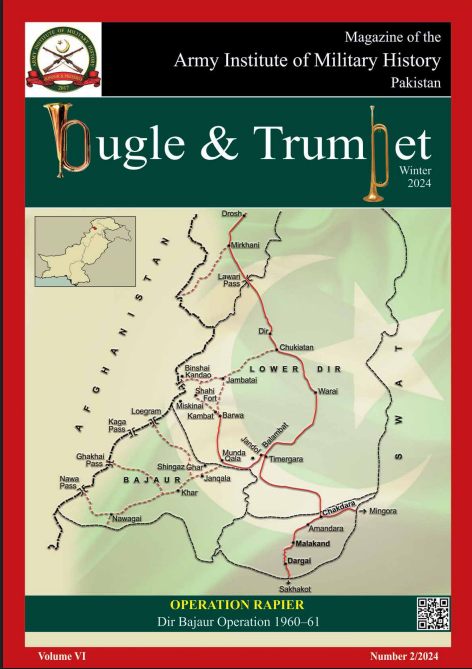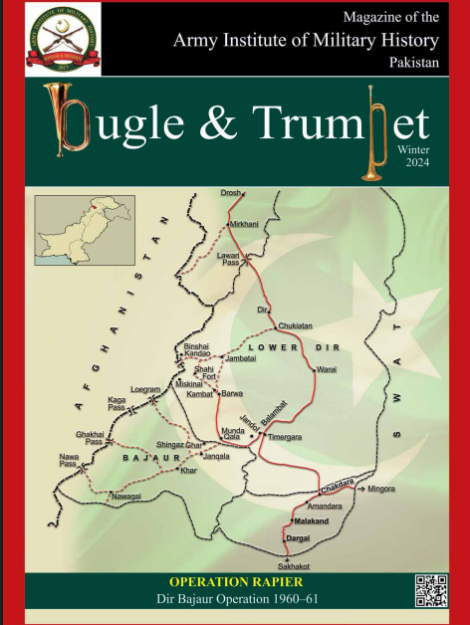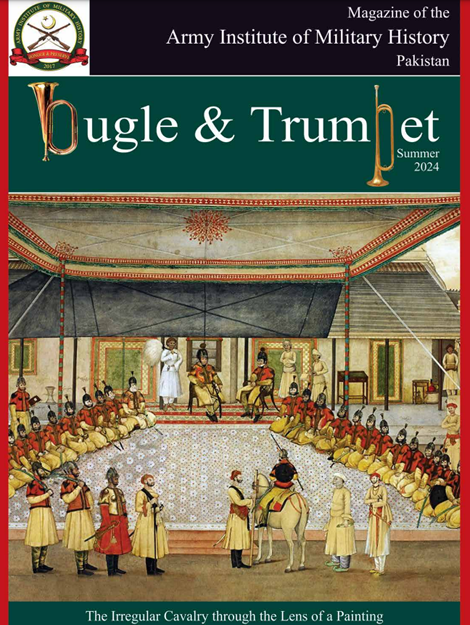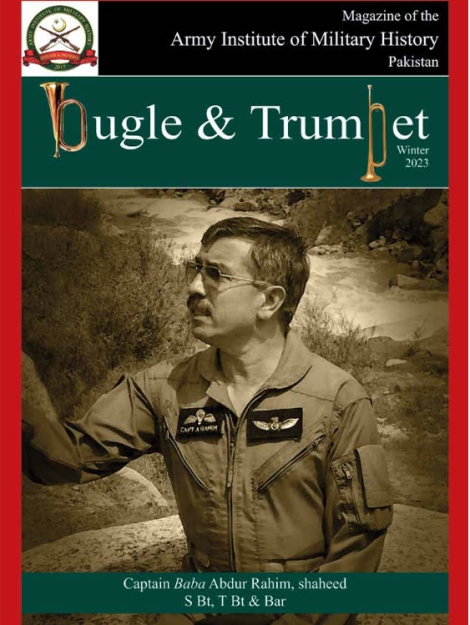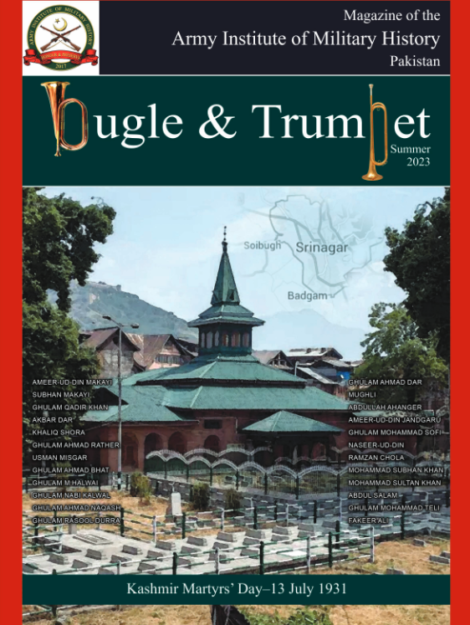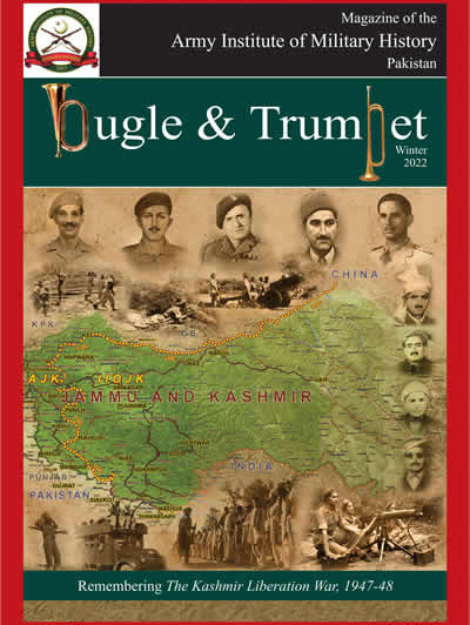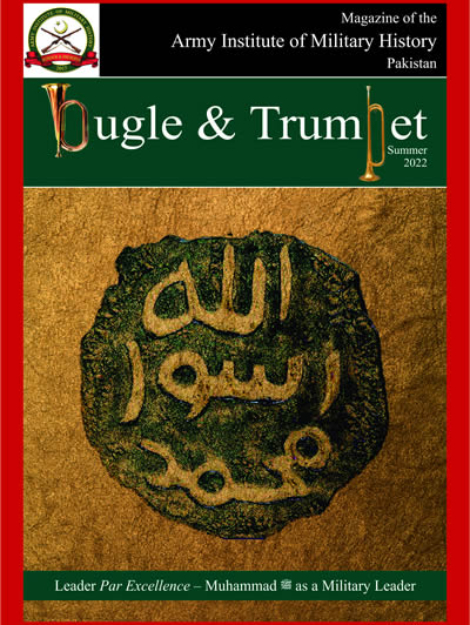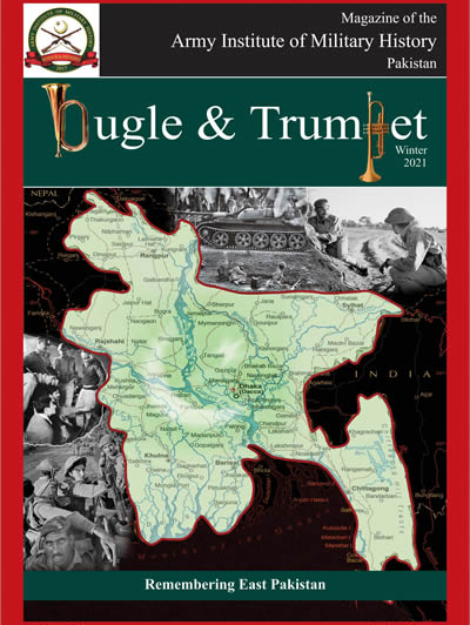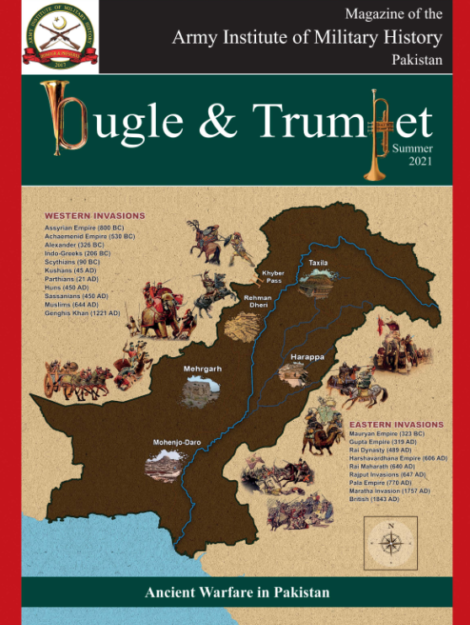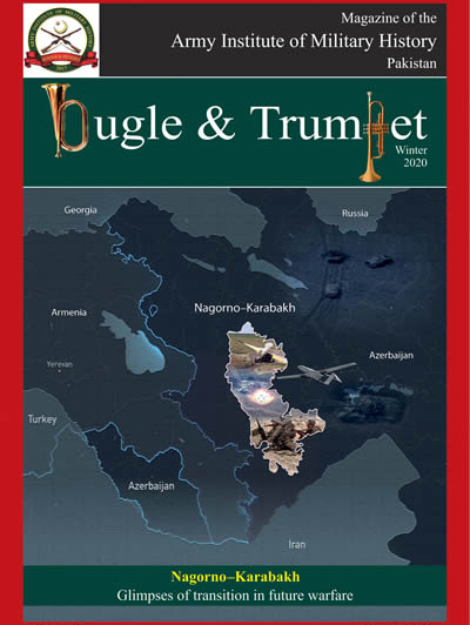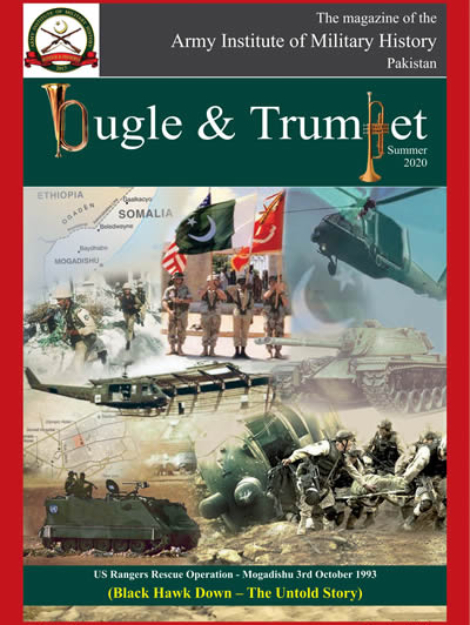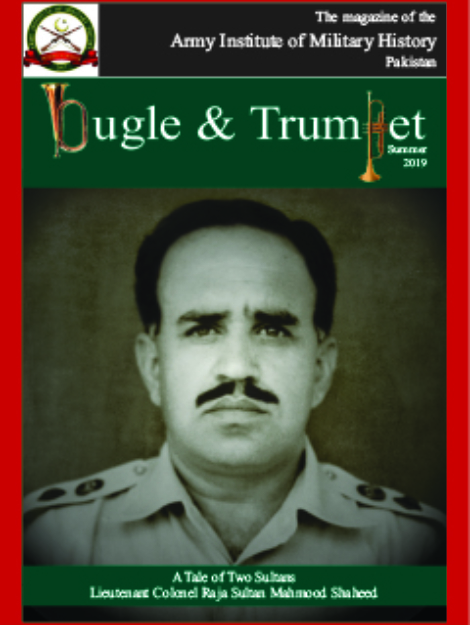About Bugle & Trumpet
As a publication with the love of military history at its core, Bugle & Trumpet (B&T) aims at providing readers with a diverse cross-section of articles that showcase different aspects of military history, and attempts to do so in a readable manner. It tells the stories of unsung heroes and living legends, and celebrates individual acts of courage. It attempts to stimulate intellectual probity and foster a fondness for this all-important, yet oft-neglected subject.
By means of its interactive nature, whereby readers may freely contribute their anecdotes, personal experiences, photographs and musings, it aims at becoming a publication which is anticipated; a place which every military history enthusiast in Pakistan might call home.
The views expressed in Bugle & Trumpet are those of the authors and do not reflect those of AIMH. All content is the intellectual property of AIMH and may be reproduced or quoted with due credit to the author and B&T. Readers are invited to contribute for the B&T. Original articles related to military history, upto 2000 words in font size 12 (Times New Roman) with double line spacing, on A-4 size paper, alongwith relevant details like photographs, maps or sketches may be sent both in hard and soft form to the editor. Endnotes (Chicago Style) and a brief biographic note of the author, including passport size photograph. are required. Contributors will be paid a remuneration @ Rs. 3/- per word. The editor reserves the right to edit or reject contributions.
Current Issue
Operation Rapier
Dear readers,
Bugle & Trumpet (Winter 2024) is presented to our readers. We feel happy to have the 12th issue with a collection of articles on military history, ranging from the Mughal and colonial eras, up to the Indo-Pak wars, and our own Army.
The cover story examines OPERATION RAPIER—a decisive Pakistani military
campaign conducted in Dir and Bajaur regions to counter an Afghan incursion, and
reinforce the country’s sovereignty. It outlines the geopolitical context of the Durand Line dispute, highlighting attempts to destabilise Pakistan by exploiting tribal dynamics.
The operation reflects Pakistan’s combined diplomatic, political and military measures to
establish state authority in these erstwhile tribal areas. It also underscores the importance of leadership, intelligence and public support in achieving operational success.
The First Battle of Panipat (1526) explores how this battle proved to be a defining
moment in South Asian history, marking the foundation of the Mughal Empire. It highlights
Babur’s strategic brilliance and tactical innovations, including the use of artillery and mobile cavalry, which outmanoeuvred the larger forces of Ibrahim Lodi. It draws parallels between
historical and modern warfare, emphasising, the importance of training, leadership and adaptability in military success.
The Battle for Milestone-5 focuses on Chawinda, which witnessed one of the largest tank battles since World War II. It highlights Pakistan’s defence against India’s OPERATION NEPAL, which aimed to cut off the Grand Trunk Road and isolate key cities. The narrative emphasises the determination and resistance of Pakistani forces, particularly 6 Armoured Division, in halting Indian advances, and inflicting heavy casualties.
The profound impact of the Agartala Conspiracy Case of 1967 is evidenced as a turning point in the political landscape of Pakistan, ultimately leading to the creation of Bangladesh in 1971. It examines the roots of Bengali nationalism, beginning with grievances over political and economic marginalisation, and Sheikh Mujibur Rahman’s rise as a central
figure, advocating autonomy through his Six-Point Formula. The article highlights the Indian role in supporting Bengali separatism, Mujib’s secret meetings in Agartala, and the
involvement of military and political conspirators in planning secession.
I hope that our readers find this issue worth reading. Please be open in communicating about further quality enhancement of the magazine. We will give due weightage to the valuable suggestions of our readers, in future editions.

